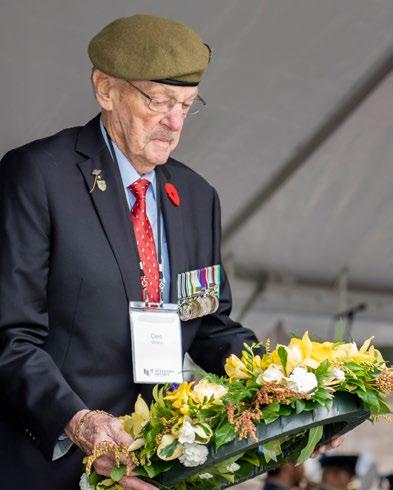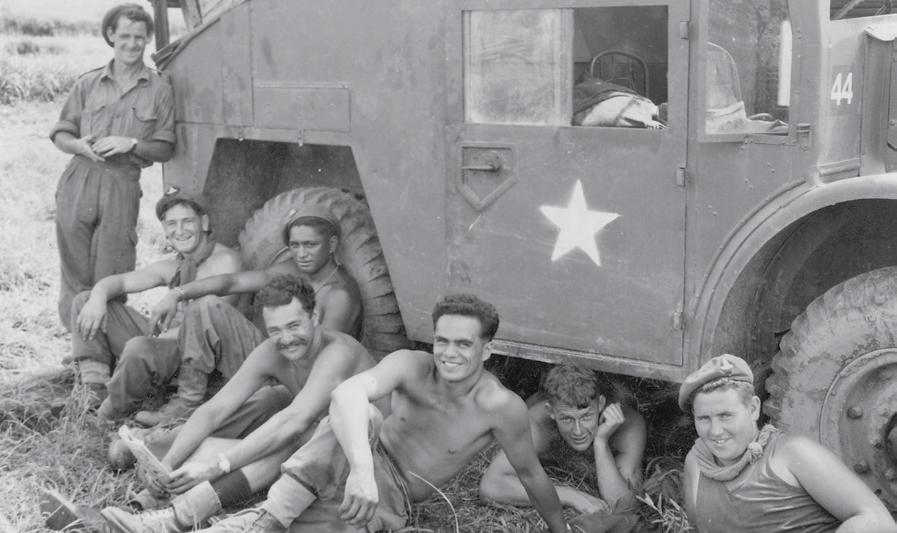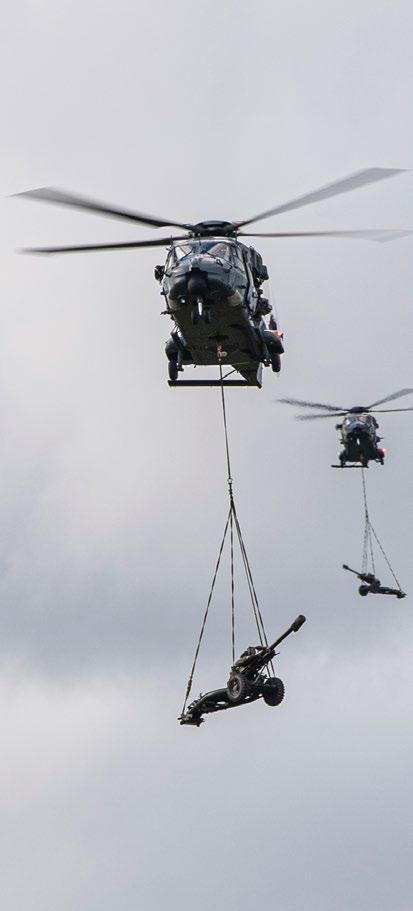
5 minute read
Remembering Korea
REMEMBERING THE KOREAN WAR 70 years on

Advertisement

The 70th anniversary of the outbreak of the Korean War was commemorated in Wellington earlier this month.

Ten Korean War veterans were joined by Prime Minister Jacinda Ardern, South Korean Ambassador Sang-jin Lee, Minister for Veterans Ron Mark, Chief of Defence Force Air Marshal Kevin Short, Chief of Army Major General John Boswell and other members of the NZDF, and Head of Veterans Affairs Bernadine Mackenzie at the commemoration at Pukeahu National War Memorial.
Wreaths, were laid, speeches given, and memories shared.
While the armed conflict lasted from 1950–53 and was ended with an armistice but no peace treaty, from 1950 to 1957 more than 6,000 New Zealanders served in Korea on land and sea as part of Kayforce. During that time 45 New Zealanders died and 81 were wounded. Thirtythree of those who died are buried in the United Nations Cemetery in Busan, South Korea, while Able Seaman Robert Marchioni’s body has never been recovered from what is now North Korea.
About 500 New Zealand Korean War Veterans are alive today.
Des Vinten has razor-sharp memories of a war fought in the backblocks of Korea 70 years ago.
The Wainuiomata man who is in his late 80s was just a teenager when he deployed as a dispatch rider from 1951–53.
“I had trained as a signaller in New Zealand and to start with I was in Seoul. There was plenty of action going on, and it was still pretty hectic for the people in the front line.”
After three months he was posted to the divisional headquarters just south of Inch’on
River. He drove a jeep on what were mainly dirt tracks to deliver his dispatches.
The New Zealand Army’s 16 Field Regiment has a special relationship with Korea.
New Zealand servicemen of 16 Field Regiment arrived in Korea on 31 December 1950, along with 10 Transport Company, a Divisional Signals detachment, joining the two Navy frigates that had arrived into theatre on 1 August 1950. As part of the 27 th Commonwealth Brigade they were eventually deployed north of Seoul in the area of the Kapyong Valley in early April 1951.
With Anzac Day approaching it was planned to acknowledge the day with the Australian 3 RAR Battalion and Turkish soldiers also in theatre. On 22 April however, a massive communist offensive of some 30,000 troops put paid to this plan and the Battle of Kapyong began. While the war held all the tension and heartache expected, there were lighter moments. “I spent an Anzac Day in the Aussie battalion’s lines – that was a lot of fun. And I ended up in military jail for a bit. The actual charge was “firing on the enemy without the Queen’s permission”. It was a bit foolish, and there might have been some beer involved.”
Mr Vinten went on to have a lengthy career as a signaller in the
New Zealand Army, retiring as a
Warrant Officer Class One in 1976. Kapyong Valley had long been used as an approach route to Seoul and should the communists break through, the entire front would shatter. Elements of 6 Republic of Korea (ROK) Division, 3 RAR Bn, 2 Princess Patricia’s Canadian Light Infantry Battalion (PPCLI) and The Middlesex Battalion supported by 16 Fd Regt were ordered to hold the line at all costs.
From 22–25 April massed waves of communist soldiers were repulsed using a combination of infantry holding ground and artillery fire support. At times gun fire was directed onto friendly infantry positions as it was the only way to break up attacks, and by 26 April the communist forces had withdrawn.
The battle was intense; 16 Fd Regt fired some 10,000 rounds in its duration. For its role in halting the attack the Korean Presidential Citation was awarded to the Regiment. • What do Korean veterans, Otaki
School and 16 Field Regiment have in common? Read about it in the August edition of Army News. New Zealand was one of the first nations to respond to the United Nations Security Council’s call for assistance in Korea, and New Zealand was the second largest troop contributor per capita.
Mr Vinten has served as National President of the New Zealand Korean Veterans’ Association, and says he has always been very


proud of the Kiwis’ contribution.



Kiwi servicemen during the war (Historic photographs courtesy of New Zealand Army Museum).

EXERCISE STEEL TALON


Soldiers from 5 Movements Company helped train and assist members of 161 BTY over two days during Exercise Steel Talon, rigging the 105mm gun so it could be flown by No. 3 Sqn from one location to another.

The first day of the exercise consisted of theory, learning about the different equipment used and the reason behind in-flight stability before becoming hands-on and conducting training in rigging.
Once 161 BTY and 5 Movements Company personnel arrived at the Landing Zone, 5 Mov Pers were put into a safety staff role overseeing 161 BTY members as they rigged the two guns. When the rigging was complete the movers conducted a final check before No. 3 Sqn began the lift and the movers conducted the hook-on procedure.










